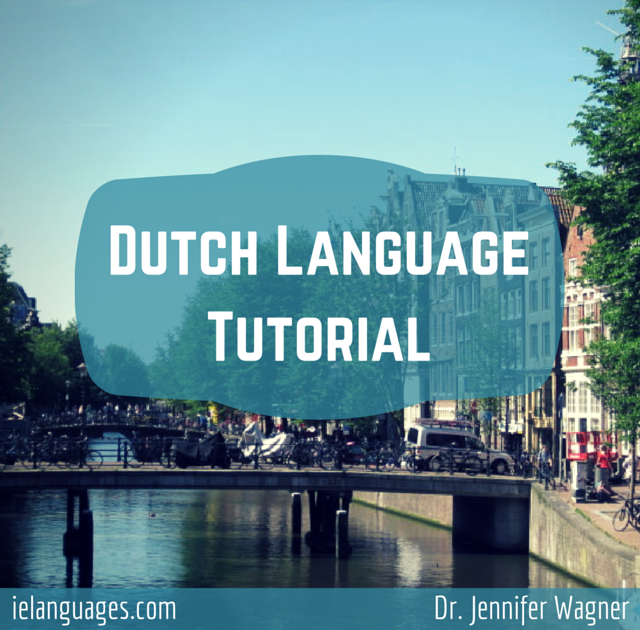Dutch Adjective Forms
Learn the different forms of adjectives in Dutch
Need more Dutch? Try the Learn Dutch Online course at Udemy or the audio and video podcasts at DutchPod101.com
 Buy Dutch Language Tutorial as a PDF e-book! Dutch Language Tutorial includes a vocabulary and grammar review of the Dutch language (more than what is available online), with one hour of mp3 recordings by a native speaker, and Dutch realia photos taken in the Netherlands and Belgium so you can see how the language is used in real life. The PDF e-book and mp3s are available for immediate download with FREE lifetime updates. Thank you for supporting ielanguages.com! Download the first ten pages of Dutch Language Tutorial (including the table of contents).
Buy Dutch Language Tutorial as a PDF e-book! Dutch Language Tutorial includes a vocabulary and grammar review of the Dutch language (more than what is available online), with one hour of mp3 recordings by a native speaker, and Dutch realia photos taken in the Netherlands and Belgium so you can see how the language is used in real life. The PDF e-book and mp3s are available for immediate download with FREE lifetime updates. Thank you for supporting ielanguages.com! Download the first ten pages of Dutch Language Tutorial (including the table of contents).
To download the Dutch mp3s, please purchase Dutch Language Tutorial.
Dutch Adjective Forms
When adjectives are placed before nouns, and not after, they add the ending -e. The spelling rules that affect pluralization of nouns and verb conjugations also apply when inflecting adjectives. However, the -e is not added when the adjective occurs before a neuter singular noun without an article (warm water) or a neuter singular noun preceded by een, geen, elk (each), ieder (each), menig (many a), veel (much), welk (which) or zo'n (such a). Adjectives that end in -en, as well as the adjectives linker (left) and rechter (right), do not add -e either.
het grote huis - the large house
de lange muur - the long wall
mijn mooie tuin - my beautiful garden
snelle treinen - fast trains
een oud huis - an old house
vers brood - fresh bread
de houten trap - the wooden staircase
zijn rechter oog - his right eye
When an adjective is placed directly after iets (something), niet (nothing), veel (much), weinig (little), and wat (something), it adds the ending -s.
iets moois - something beautiful
niets nieuws - nothing new
If the noun following the adjective has been mentioned before, it may be omitted. In English, "one" is used in its place, but there is no equivalent word in Dutch. Dutch simply uses the article and adjective, with the -e inflection, if it is required.
Koop je een jurk? Ja, ik neem de blauwe. Are you buying a dress? Yes, I'll take the blue (one.)

If you enjoy the tutorials, then please consider buying French, Informal French, Italian, Spanish, German, Swedish, or Dutch Language Tutorials as a PDF e-book with free mp3s and free lifetime updates.
Buy French TutorialBuy Informal French
Both French e-books
Buy Italian Tutorial
Buy Spanish Tutorial
Buy German Tutorial
Buy Swedish Tutorial
Buy Dutch Tutorial
Please consider sending a donation of any amount to help support ielanguages.com. Thank you!
FluentU offers authentic videos in French, Spanish, German, English, Chinese and Japanese. Learn from captions and translations and enjoy access to ALL languages!
Learn Spanish, French, German, Italian, Mandarin Chinese and English with authentic videos by Yabla that include subtitles and translations.
Learn to read languages with interlinear bilingual books that include the original language and an English translation below in a smaller font.
Hundreds of free and paid online language learning video courses at Udemy. By native speakers and experts, from Arabic to Zulu.




